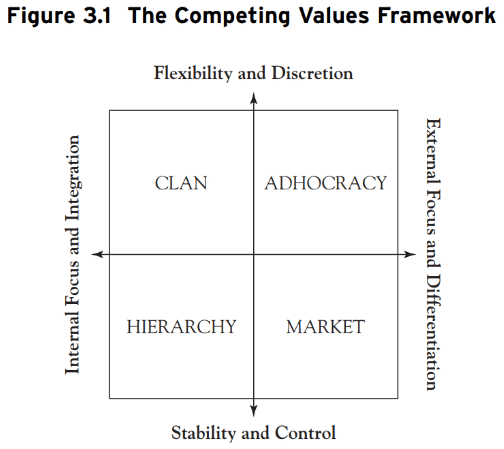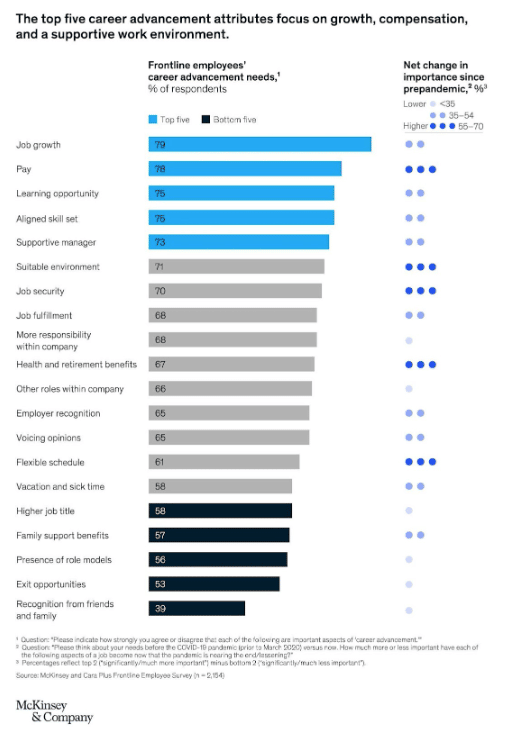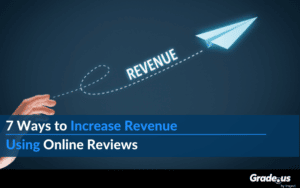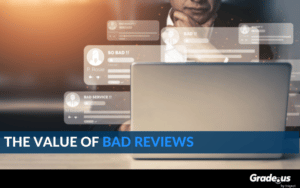Updated 9/23/2022
What’s the easiest way to get customer reviews?
Get your employees to ask for them, right after they’ve delivered amazing customer service. That’s a problem for many organizations though. Just because you have an employee incentive program doesn’t mean employees will request reviews.
You need two ingredients for that.
(1.) An employee incentive program and (2.) employee incentives. With the right incentives, you can generate a significant amount of reviews, much faster than email or text message requests.
Note: Need help creating a Review Request Incentive Program for your employees? Check out our helpful guide for A to Z instructions.
Today we’re going to take a closer look at employee incentives.
Why most employers choose the wrong employee incentives
Rewards punish your team.
In his post for the Harvard Business Review, Alfie Kohn makes a strong case against employee incentives. Here are a few excerpts outlining his reasoning:
- Pay isn’t a motivator. “Just because too little money can irritate and demotivate does not mean that more and more money will bring about increased satisfaction, much less increased motivation.”
- Rewards punish. “not receiving a reward one had expected to receive is also indistinguishable from being punished. Whether the incentive is witheld or withdrawn deliberately, or simply not received by someone who had hoped to get it, the effect is identical. And the more desirable the reward, the more demoralizing it is to miss out.”
- Rewards rupture relationships. “The surest way to destroy cooperation and, therefore, organizational excellence, is to force people to compete for rewards or recognition or to rank them against each other. For each person who wins, there are many others who carry with them the feeling of having lost. And the more these awards are publicized through the use of memos, newsletters, and awards banquets, the more detrimental their impact can be.”
- Rewards ignore reasons. “In order to solve problems in the workplace, managers must understand what caused them… relying on incentives to boost productivity does nothing to address possible underlying problems and bring about meaningful change.”
- Rewards undermine interest. “Rewards, like punishment, may actually undermine the intrinsic motivation that results in optimal performance. The more a manager stresses what an employee can earn for good work, the less interested that employee will be in the work itself.”
Does this mean you shouldn’t incentivize your employees?
Not at all.
Rewards distributed individually create unnecessary competition, undermines relationships, and hurt morale.
This is no good.
However, you can reward your employees in a way that brings your team together. When it’s done right, your employee incentive program should prevent a hyper-competitive, cutthroat environment. What’s fantastic about an incentive program that’s structured this way is the fact that it uses social proof to identify top performers across a wide variety of core metrics.
The hidden structure of a high-performing review request incentive program
What does a strong incentive program look like?
- It creates team cooperation. Your incentives should use both public and private rewards to full effect. For the most part, incentives that are tied to group performance foster cooperation and collaboration. It shouldn’t be a zero-sum game (i.e., win/lose). Co-workers should be able to go to their managers and say, ‘Hey, we’re falling short on our goal of #. Where are we going wrong?’ rather than tackling the problem alone.
- Incentives are purposeful. Strong incentive programs give with a goal in mind. Are employees: (a.) recognized for exceptional performance? (b.) rewarded as a show of appreciation? (c.) compensated as a reward for achievement (d.) given opportunities as a show of trust and confidence?
- Incentives improve performance. This is less about rewarding employees and more about making sure your interests are aligned. It’s much easier to get buy-in from managers and employees if their interests are aligned with shareholders (e.g., employee stock options). If they’re confident they’ll see a return on investment for their hard work, intrinsic motivation comes easily.
These should be our non-negotiable anchor points.
Next, we’ll need to account for company values and culture. Jeff Lawson, co-founder of Twillo, explains the difference between values and culture.
- Values are written down. Your values are written down and shared with everyone throughout the company
- Culture is living values. It’s how the people in your law firm live out the words written in your values
Researchers Robert E. Quinn and Kim S. Cameron discovered there are four types of organizational cultures.

- Adhocracy cultures are driven by change. This corporate culture is often characterized as “tents rather than palaces,” these companies are in a constant state of flux. These organizations are highly adaptable, flexible, and creative.
- Clan cultures describe themselves as a ‘family.’ These companies spend a great deal of attention on mentoring, nurturing, and investing in their clan. It’s a family-like environment that’s oriented around doing and accomplishing together. Team development is a must, and relying on co-workers as essential components of the business is essential. Core values —engagement, commitment, and loyalty are non-negotiable.
- Hierarchy cultures follow traditions, structures, and routines. Statements like “we don’t do things like that here” or “when I worked at ___, we did ___” are indicators of a clan culture. Compliance is required, and employees are expected to adhere to predefined roles. Values like seniority, rank, status, decision-making authority, rules and procedures, structure, and control are all indispensable.
- Market cultures are utilitarian, kill-or-be-killed environments primarily focused on returns. Internally, companies with market cultures are competitive, achievement-focused, and driven by outcomes and prestige. Co-workers are either moving up or out; internal competition is never-ending, results are all that matters, everyone is expendable if they fail to perform, and everyone is a means to an end.
Why does this matter?
The incentives you offer should fit with your company culture. Group rewards may work in a clan culture, but they won’t work as well in market cultures (unless you give them an external enemy to defeat).
If you’re offering incentives, read the room.
At this point, you’re ready to set up your framework for review request incentives. For each incentive, you’ll need to determine if your incentive is:
- Public (group/team incentives) or private (individual incentives)
- Compatible with your company culture (e.g., adhocracy, clan, hierarchy, or market) and whether it fosters cooperation or competition
- For a set purpose – recognition, appreciation, compensation, or opportunity
- Aligned with your company values
With this in mind, let’s take a look at a few review request incentives you can offer your employees.
Incentive #01. Company Swag
Employees do enjoy swag when it’s well-made, interesting, and fun to use. Don’t think you have to stick to a logo and nothing more. If there’s a company slogan or in-joke your employees enjoy, you can incorporate that. You can also commemorate their achievements by adding, “Review Superstar 2019” or something similar.
Company swag works best when it’s used as recognition.
Think the Green Jacket in Golf, the MVP trophy in Basketball, or the Nobel Peace Prize medal. If you’re going to offer company swag, give employees benefits that go along with said swag (e.g., cash, verbal recognition, extended opportunities, etc.). Treat company swag as a tool that boosts social status inside and outside the company.
Disclosure: Public
Purpose: Recognition (conferring status)
Best for: Market, Hierarchy, Clan
Pro-tip #1:
Don’t be cheap. Cheap company swag isn’t worth fighting for and may even be insulting. Reviews are a huge part of the way your company will promote itself and find new business. Employees who ask for them are growing your business and your bottom line—honor that.
Pro-tip #2:
Steer clear of office supplies. No matter how much employees love their job, giving them pens, day planners, or anything else that reminds them of their desks is a little akin to providing your Mom an ironing board for Christmas.
Incentive #02. Executive/Manager Recognition
A recognition package can be a career-maker for your employees.
Think about it.
Part of the executive team (e.g., the CEO, COO, and CMO of your company) creates a recognition package for you due to your extraordinary service to the company. This recognition package could include:
- LinkedIn recommendations from the CEO, COO, and CMO of your company
- Recognition/recommendation letters are sent to you via snail mail and email, and placed in your file
- Recommendations for promotions in the company (e.g., upward or lateral moves)
- Mentorship via company advisors and mentorship programs
This is a career-making event.
Think about how incredible this looks on your resume and LinkedIn profile. Think about what this would do for your career. It’s a pretty incredible thing, no?
Disclosure: Public/Private
Purpose: Recognition (conferring status)
Best for: All Cultures
Incentive #03: Bonus Rewards when Specific KPIs are met
Imagine that you have a few review request goals.
- We’ll ask every customer for their feedback
- We will pursue a 99% customer satisfaction rating
- We promise to address every customer concern within 2 business days
- We will respond to every customer review online
These are simple and concrete goals, right? It’s easy to know when you’ve met the standard; improvement is no secret. You keep working at it until you hit the goal.
Now imagine that these goals are time-based.
So your team sets new goals each quarter, year, etc. When your team meets these predetermined criteria, you (the manager) reward your team as a group with some form of compensation (e.g., group bonuses, profit sharing, stock options, etc.). Remember, it’s much easier to get buy-in from managers, executives, and employees if your interests are aligned with theirs.
Disclosure: Public
Purpose: Compensation, Appreciation
Best for: All Cultures
Incentive #04: Team Perks based on performance
Picture this.
Your customer support team has just achieved the impossible. They’ve maintained a 95% satisfaction rating over the last 24 months. They’ve also maintained a 4.7-star rating (aggregate) across each of their profiles on major review sites.
So you decide to reward your team.
You give them company perks to go along with their swag. Your customer support team could receive all of the following:
- Premium parking spots (customer support teams only)
- Vacation credits that can be used for flights, hotels, rentals, transportation, and more
- They receive housekeeping, laundry services, and babysitting reimbursement
- Special privileges that give your team the support they need to make great things happen
You’ll want to build a reputation around your team. ‘Oh wow, those are folks in the support team 6 (lol). They helped sales close $500 million last quarter.’
The benefits of this are twofold.
(1.) Once your team has this status, they’ll work even harder to maintain their newfound status. The legendary status you’ve cultivated around your team is one they’ll do their best to live up to. (2.) With proper guidance, your team will become self-sustaining. Top performers on the team won’t put up with poor performance from stragglers; they’ll do their best to ensure the prestige and rewards they’ve received continue uninterrupted.
Disclosure: Public
Purpose: Compensation, Appreciation
Best for: Clan, Market
Incentive #05: Intrapreneurship Program Access
Access to your company’s intrapreneurship program is a straightforward way to make your employees happy.
What is that, exactly?
Investopedia defines an intrapreneur as “an employee who is tasked with developing an innovative idea or project within a company. The intrapreneur may not face the outsized risks or reap the outsized rewards of an entrepreneur; however, the intrapreneur has access to the resources and capabilities of an established company.”
This sounds like a whole lot of work to reward employees for simply doing their job.
It’s really not.
In reality, this is something most employees are already looking for. Research from McKinsey backs this up.

See that?
The top five desires of employees are job growth, pay, learning opportunities, aligned skill sets, and supportive managers.
An intrapreneurship program allows you to provide all of this to your employees on a case-by-case basis. Earlier in the article, I mentioned that rewards tend to feel like sour grapes if you have to watch others get them.
This program circumvents this.
Everyone gets a chance at the intrapreneurship program if they earn it. You lay out clear and objective requirements ahead of time, so everyone sees that the opportunity is fair.
If they’re not in the intrapreneurship program, it’s because they don’t want to be.
It’s not on you, it’s on them.
This treats your employees like adults. They’ll need to do extraordinary work if they want extraordinary career gains.
It’s a simple way to amplify intrinsic motivation.
Disclosure: Public/Private
Purpose: Compensation, Appreciation, Recognition, Opportunity
Best for: All Cultures
Review request incentives are like dynamite
Choose the wrong incentives, and you break trust, destroy morale, and increase employee churn.
Choose the right incentives, and you win.
What’s the easiest way to get customer reviews? Get your employees to ask for them, right after they’ve delivered legendary customer service.
This isn’t a problem for you. Your team is eager to perform and hungry for the chance to prove themselves. You have the right incentives; your employees are obsessed with delivering amazing service. They can’t wait to request reviews.
You’re ready.
Thoughtful planning means you’re about to generate an avalanche of positive reviews much faster than you anticipated. Suddenly generating reviews is super easy, barely an inconvenience.










